- Home
- Keith Douglass
Alpha Strike c-8 Page 2
Alpha Strike c-8 Read online
Page 2
0824 local (Zulu -7)
Tomcat 205
The two Tomcats made several passes over the two rocks, descending to five thousand feet for a better look. “Nothing new, as far as I can tell,” Bird Dog said finally. “Same old rusty tank, same little fellow sitting on top. And the same old gun emplacements on Mischief Reef. Okay, enough of this shit!”
“Now that we’ve had our look-see, you ready to head for home?” Gator asked.
Bird Dog didn’t answer.
“Come on, Bird Dog, let’s just head back to the carrier, nice and easy,” Gator coaxed.
“In a minute. Let’s take a quick trip around the battle group first. Just for the hell of it,” Bird Dog said, too casually.
“Don’t do this to me again,” Gator warned. “No fly-overs on the cruiser, you hear me? They got downright hostile the last time you did that without asking them. You’re going to convince them to send a missile up our ass next time, instead of just locking us up like last time.”
Bird Dog shoved the throttle forward and felt his ass sink into the hard seat. Around him, the comforting scream of the twin engines deepened. He held his hand on the throttle for a moment, reveling in the sheer power of the vibrations there. Sweet and even, reassuring reminders that every bit of this finely tuned machine was running perfectly.
“We’re not going to do a fly-over,” he said softly. “Not this time. But somebody ought to remind them to watch out for friendlies. That damned CIWS locked me up last time. I don’t appreciate it. Not one little bit.”
The Phalanx Mark 15 20-mm CIWS — pronounced seewhiz — was the Close-In Weapons System, a ship’s last defense against a fast-moving inbound missile. Its J-band radar tracked both incoming targets and the gatling-gun stream of bullets it fired, self-correcting its aim. Theoretically, the Block I version on the Vincennes could fire 4,500 rounds each minute within two seconds of detecting an incoming object that matched its threat parameters.
“What’re you going to do, Bird Dog?” Gator asked, a sudden note of concern in his voice. “Don’t go screwing with that ship. CAG already reamed you out for the fly-over, and he’ll castrate you if he catches you dicking around out here.”
“Hang on!” Bird Dog said, and punched the throttle forward into afterburner. He nosed the aircraft down, letting gravity add speed to the power generated by the afterburners.
Bird Dog leveled out at five hundred feet, increasing his speed to.8 Mach. At 480 knots, the aircraft was traveling eight miles every minute. The cruiser was thirty-five miles away, and would have a surface radar range of approximately thirty miles against a decent target. Bird Dog hoped he’d dropped off their radar screens when he’d descended.
“Damn it, Bird Dog! You’re trying to kill me, aren’t you? I swear to God, one of these days I’m punching out! I’ll let you try to explain why you got back to the ship minus your backseater!”
Bird Dog watched the ocean streak by below. One more minute.
Six miles from the cruiser, Bird Dog yanked back on the stick and stood the screaming jet on its tail. He let it claw for altitude, and felt the slight decrease in pressure against the back of the seat as his speed fell off. At six thousand feet, he leveled off and continued on toward the cruiser.
“There,” he said, satisfied. “CAG can hardly gig me for a fly-over if I’m at angels six, can he?”
“Oh, no, hardly a fly-over. You idiot! Are you trying to give that ship a hard-on for you?”
“What? Me?” Bird Dog said innocently.
“Asshole,” Gator muttered. “You know exactly what they thought, and CDC is going to be screaming in my ears any second. Disappear off everyone’s radar, come in fast and low and pop up — you know what they thought!”
“That I was a sea-skimmer missile popping up on them? Oh, surely not, Gator! Not that finely trained bunch of black shoes that tried to sic CIWS on me last week! After all, they’re watching the scopes, tracking the friendlies. They had to know it was me, didn’t they? I mean, we talked to them last week about not causing a blue-on-blue engagement. Surely they’re paying more attention this time!”
“If I had any sense, I would have punched out an hour ago and taken my chances with the sharks! Better them than CAG.”
“So touchy,” Bird Dog murmured. “You RIOs never have the right stuff. You know that, Gator?”
His backseater sighed and gave up.
Twenty miles from the carrier, something blipped into existence on the RIO’s radar screen for two sweeps. “Hold on, I got — wait, it’s gone,” Gator said.
The note of excitement in Gator’s voice cut through Bird Dog’s daydream of a perfect world where pilots flew every day and every trap was a three-wire. “Got what, Gator? What?” Bird Dog demanded.
“Nothing now,” his RIO said, frustration edging his voice. “I thought I saw a high-speed blip break out of the ocean clutter. Just for a second — it’s gone now.”
“I saw it, too,” Lieutenant Commander Joyce Flynn, Spider’s RIO, chimed in. Nicknamed Tomboy, the diminutive redheaded Naval Flight Officer had been one of the first women assigned to a combat squadron.
“What the-what do you mean, a blip?” Spider demanded.
“Just that. A couple of hits on the AWG-9, then it disappeared.”
“Sea clutter. Ain’t nothing out here high speed,” Bird Dog said. He shrugged, and felt a moment of sympathy for the two Radar Intercept Operators. If the presence patrol missions were boring for a pilot, they were doubly so for the RIO. Few radar contacts, nothing to track or shoot at, and not even the simple pleasure of flying to make up for it. Even if there had been adversary air, Bird Dog wouldn’t have been inclined to worry. He took it as an article of faith that there wasn’t an aircraft built or a missile launched that could touch a Tomcat. RIOs always worried too much.
“You’re probably right. Nothing in the LINK on it,” Gator said uneasily. The AWG-9 had its problems with look-down capability, a problem partially remedied on the later versions of the F-14 and somewhat improved on the F/A-18. “Then again, this area’d be out of range of the surface search radars off the ships. And it’s awful calm down there to be generating much sea clutter. We got time to swing back and take another look?”
Bird Dog glanced at the fuel gauge. “Nope, not unless you really need to. We stay around too much longer and Jeff’s gonna have to launch a Texaco. Then we’ll catch it when we get back.”
“No, not solid enough for that,” Gator answered. “Probably just sea clutter, like you said. Still …”
“How about we drop down a little lower while we head back to the boat?” Bird Dog asked. “You take a quick look around on the turn. Maybe it’s a fishing boat or something.”
It was, he thought, the least he could do for the RIO, who’d suffered through an occasional barrel roll or period of inverted flight to break up Bird Dog’s own boredom. Chasing down sea clutter ghosts would give them both a break from the monotony of straight and level flight.
0828 local (Zulu -7)
Island 203
A high-pitched whine, barely audible at the edge of his perception, caught his attention. Chu Hsi paused, halfway out of the tank. Was it barely possible that there might be another aircraft in the area? Some unexpected event to relieve the unending tedium?
He scanned the horizon, turning in a circle, looking for the source of the noise. He selfishly said nothing to the others, keeping this experience all for himself. Then he would be the one with the new experience to relate, rather than having to share it with the humorless gunner.
A hint of movement on the horizon caught his attention. Too small and too low to be an aircraft, unless it were driven by a suicidal pilot, the shape skimmed over the tops of the waves, barely clearing the water. It was impossible — no! He’d watched the American aircraft during their entire transit, and he would have seen anything leave their wings.
Four seconds had passed since the flash had caught his attention. Chu Hsi opened his mouth to yell
at the rest of the tank crew.
The missile streaked in from the horizon, traveling at Mach 4, about 2400 miles an hour. The first guttural scream barely had time to start out of Chu Hsi’s throat before the missile hit his tank.
The fuel and ammunition flashed the interior of the tank into a searing hell, reducing the gunner inside to ash and cinders. A split second later, shards of shrapnel shredded Chu Hsi into barely recognizable chunks.
Fragments of tank, island, and men exploded outward and upward on the crest of an explosive fireball. Responding to the inexorable insistence of gravity, the debris eventually hung in midair for a split second, two hundred meters above the water, before beginning its descent back into the warm waters of the South China Sea.
Had he still been alive, Chu Hsi would have been pleased to see that the Spratly rock he hated so much no longer existed.
0829 local (Zulu -7)
Tomcat 205
“Holy shit!” Gator screamed over the ICS. “Shit, Bird Dog, get this baby turned around! Helluva explosion back there!”
“Tell me about it!” Bird Dog said, fighting a blast of turbulence that shook the aircraft from behind. “Whatever it was, it shook the hell out of the atmosphere!”
Bird Dog thumbed the switch over to the tactical frequency reserved for aircraft to combat direction center communications. “Homeplate, Viper 205. You see that?”
“Roger, Viper 205. Say state?” the Operations Specialist, or OS, on board USS Jefferson responded. The OS had been monitoring Bird Dog’s mission continually on the radar on board the carrier.
Reflexively, Bird Dog reeled off his fuel status and then said, “What the hell was it?”
“We don’t know. Tanker airborne in ten mikes for Viper flight. TAO requests you swing back over those islands and take a look.”
Bird Dog threw the Tomcat into a tight left turn and said, “Roger, on my way. I’m gonna need gas in about thirty mikes, sooner if I have to go buster.”
“On its way now, Tomcat 205.”
What the hell was it? And where did it come from? If it’d been aimed at us, would we have seen it? Of course we would.
Lost down in the sea clutter, it can’t touch us. It’d have to gain altitude to reach a Tomcat, and we’d have plenty of time to react. Ain’t nothing can reach out and touch a Tomcat, nothing!
But if they were so damned invulnerable, why the hell was his stomach clutched in a knot and his heart beating faster than the thrum of the Tomcat? And why the hell did he have to pee so bad?
Three minutes later, Bird Dog slowed to three hundred knots, after Gator assured him that there was no hostile activity in the area. His RIO’s voice had lost all traces of his earlier good mood and was now flatly cool and professional. Bird Dog knew Gator’s face would be glued to the soft plastic hood surrounding the radar screen, his hands moving nimbly by rote over the different shaped knobs and dials that controlled the display. His own heartbeat had slowed to almost normal, and he felt the easy invulnerability he’d always felt flying.
The air caught the aircraft and buffeted it slightly as the Tomcat’s wings automatically swept forward into the low-speed configuration. The additional wing area increased lift and enabled the Tomcat to stay aloft at slower speeds.
“See anything, Bird Dog?” Gator asked. His RIO’s head would stay buried in the scope until they were certain there were no other contacts around.
“Not me. How about you, Spider?”
“Just the Mischief Reef tree house. Nothing else. That’s the problem. Five minutes ago, there was another rock out here, one with a T-54 and Stingers. Damned tough to see anything at this speed, but I know it was there.” Even at three hundred knots, the surface of the ocean flashed by too quickly for close observation.
“This is a job for a Viking or a helo,” Bird Dog agreed. “Let’s see what Mother can scare up for us. Homeplate,” he continued, switching from ICS to the tactical circuit, “Viper 205. We need a slow-mover out here. Suggest we tank, and then provide cover for supporting units.”
“Roger, understand. Wait one.” The OS monitoring the two Viper aircraft fell silent, and the hiss of static filled the circuit. A few moments later, the distinctive two-tone warble of a secure circuit being activated cut through the static.
“Viper 205, you’re cleared to tank. Vikings are airborne in fifteen mikes, along with SAR.”
“SAR? What for?”
A new voice cut in on the circuit. “Viper flight, TAO. The only thing that could have blown up out there are those rocks. Just in case anyone made it out, SAR will cover.”
Well, great. What the Tactical Action Officer really meant, Bird Dog knew, was that since no one had any idea of what had hit the rocks or where it’d come from, no one could tell him whether there was another one on the way.
So just to be on the safe side, they’re launching SAR. Just in case they have to pull my happy little ass out of the drink. Like I don’t know that, even if they won’t say it that way.
0840 local (Zulu -7)
Fifty miles east of Island 203
Tactical Flag Command Center, USS Jefferson (CVN 74)
“What the hell was it? Come on, people, I need some answers!” Rear Admiral Matthew Magruder, commander of carrier group 14, stared at the tactical display in the tactical flag command center, usually called TFCC. No signs of trouble there, with every aircraft and surface ship positively identified as neutral or friendly. “And what’s that damned Aegis cruiser doing this time?”
“Don’t know, Admiral,” the TFCC watch officer said. He pulled one of his radio headset earphones away from his head so that he could hear the admiral better. “An explosion of some sort. Vincennes requested permission to go take a look. From the looks of the screen symbology, she didn’t wait for permission to change course.”
The tall admiral gazed at the screen impassively. His slate-gray eyes were set in the expression of permanent neutrality that had earned him the call sign “Tombstone” at his first F-14 squadron. The shortened version of it, “Stoney,” was an even more accurate description of his usual expression. Aviators who’d flown with him for years swore that they’d seen him smile before, but the TFCC watch team had their doubts.
“Tell Vincennes I said to get her Aegis ass back into screen position,” Tombstone ordered. “Until we know what that was, I don’t want her charging off into the unknown and leaving the carrier unprotected. I’ll be in Supp Plot.”
Supplemental Plot was the high-security intelligence module next door to TFCC. Tombstone ducked out of TFCC, into the common vestibule the two spaces shared, and was inside Supp Plot in four steps. He nodded to the enlisted Intelligence Specialist, or IS, guarding the door, and was met by the watch officer, Commander Busby.
“You crypto guys got any information on this?” Tombstone asked.
“No hard data, Admiral, but there are several possibilities,” Commander Busby said. “The Chinese might be using the island as a depot for material they don’t want to risk underneath their Mischief Reef tree house. Mix volatile compounds with bad safety practices, and you’ve got the right conditions for spontaneous combustion. Or there might have been a fire in the tank. Not a likely explanation. A diesel fire alone wouldn’t cause a fireball that big.”
“Any evidence to support either theory? That rock’s been photographed more times than Cindy Crawford. No signs of oil drums or construction of any bunkers that I’ve seen.”
“No, Admiral. That brings me to the second possibility. A missile.”
“From where? More importantly, who shot it? There was nothing in the area except Tomcat 205.”
“Submarine, maybe. Could be a land-launched sea-skimmer, too. That would explain the blip the RIOs saw. Breaking those things out on the radar picture is chancy at best. They get lost in the sea clutter. But on a nice day like this, sea state one, there’s a possibility of detecting one,” Busby said.
“Same problem as your first theory. We’ve had no contact on any subma
rines, and no HUMINT on any deployed in this area. And you’re talking about a hell of a long range for a sea-skimmer — couldn’t have been shot from land,” Tombstone said.
“Not according to current intelligence, no. But the range is within the capability of a U.S. Tomahawk.”
“Which they don’t have. That we know about.”
“That we know about,” the intelligence officer echoed. “But the theory fits the facts that we do have.”
“Set Condition Two,” Tombstone ordered. “Until we figure out what caused this, I want every eye peeled for hostile activity. I’ll be in TFCC if you need me.” And all the more reason to keep the Aegis in close. That blasted cruiser’s been more of a pain in the ass than any other ship in the battle group. Killington would choose this particular time to do it, too!
When you got right down to it, he decided, Captain Jake Killington, Commanding Officer of the USS Vincennes, had been a marginal pain in the ass for the entire cruise. Vincennes was often not where she was supposed to be, off doing something more interesting than protecting the carrier or pursuing some tangential interest of her CO. They’d expended more “giant tomatoes,” the inflatable targets used for surface gunnery practice, and more five-inch shells than all the other ships put together. To top it off, after the last onboard conference with Killington and his operations officer, the flag mess chief had reported that two gallons of ice cream and a silver sugar-and-creamer set were missing.
Back in TFCC, Tombstone stared at the symbols crawling across the big-screen display. Wonder if those pilots know how lucky they are? My list of things to worry about was a lot shorter when I was just a pilot. Sure, it’d been dangerous, but it was just me, my RIO, and my wingman.
The more senior Tombstone got, the more people depended on him to make the right decisions to keep them from getting killed. On top of that, he barely got a chance to fly enough to stay qualified. Flying actual combat missions was out of the question. The whole battle group, over ten thousand men and a billion dollars worth of equipment, was his responsibility now, not just a couple of aircraft or even one squadron’s worth.

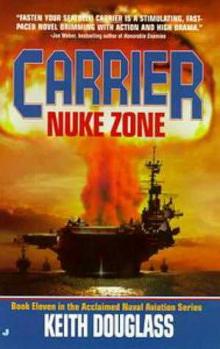 Nuke Zone c-11
Nuke Zone c-11 Seal Team Seven 6 - Battleground
Seal Team Seven 6 - Battleground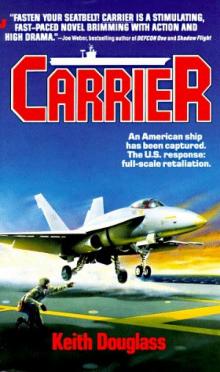 Carrier c-1
Carrier c-1 Island Warriors c-18
Island Warriors c-18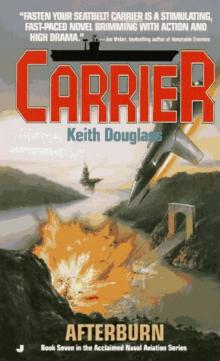 Afterburn c-7
Afterburn c-7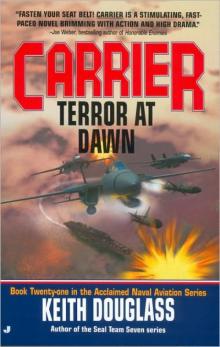 Terror At Dawn c-21
Terror At Dawn c-21 Specter sts-2
Specter sts-2 Joint Operations c-16
Joint Operations c-16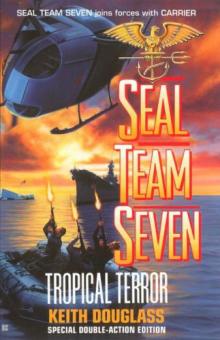 Tropical Terror sts-12
Tropical Terror sts-12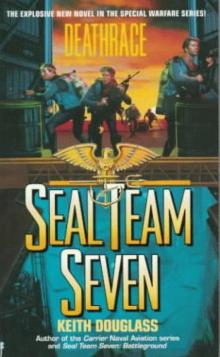 Seal Team Seven 7 - Deathrace
Seal Team Seven 7 - Deathrace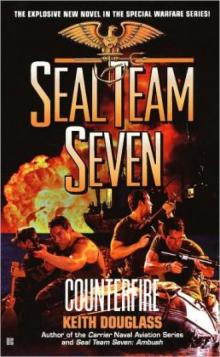 Counterfire sts-16
Counterfire sts-16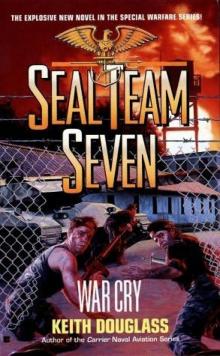 War Cry sts-9
War Cry sts-9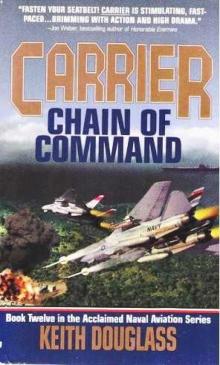 Chain of Command c-12
Chain of Command c-12 Brink of War c-13
Brink of War c-13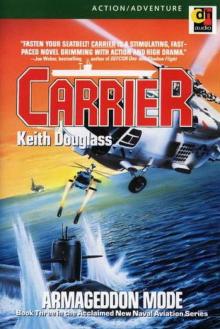 Armageddon Mode c-3
Armageddon Mode c-3 Arsenal c-10
Arsenal c-10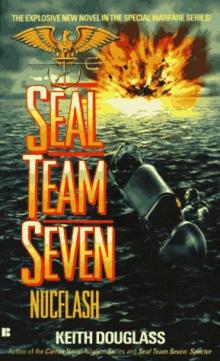 Nucflash sts-3
Nucflash sts-3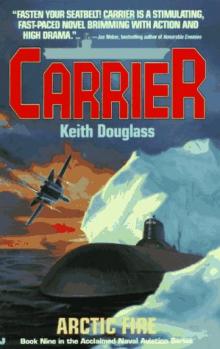 Arctic Fire c-9
Arctic Fire c-9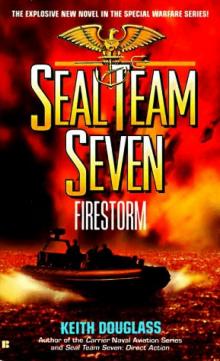 Firestorm sts-5
Firestorm sts-5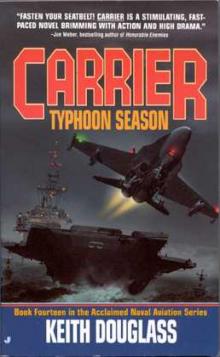 Typhoon Season c-14
Typhoon Season c-14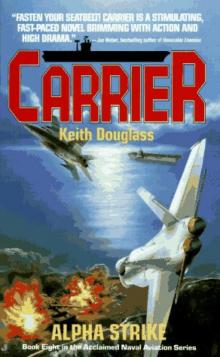 Alpha Strike c-8
Alpha Strike c-8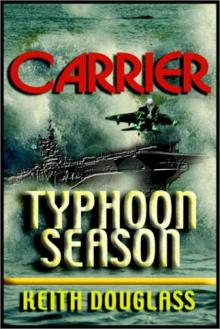 Carrier 14 - TYPHOON SEASON
Carrier 14 - TYPHOON SEASON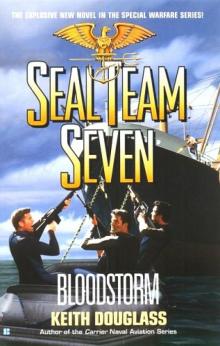 Bloodstorm sts-13
Bloodstorm sts-13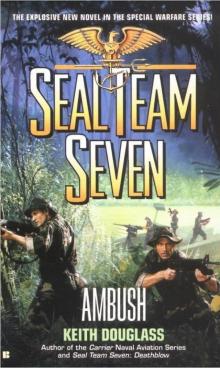 Ambush sts-15
Ambush sts-15 First Strike c-19
First Strike c-19 Flame Out c-4
Flame Out c-4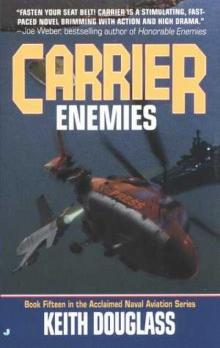 Enemies c-15
Enemies c-15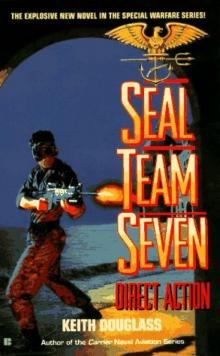 Seal Team Seven 04 - Direct Action
Seal Team Seven 04 - Direct Action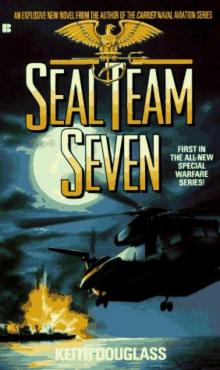 Seal Team Seven 01 - Seal Team Seven
Seal Team Seven 01 - Seal Team Seven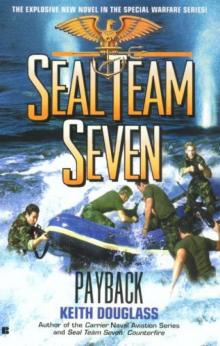 Payback sts-17
Payback sts-17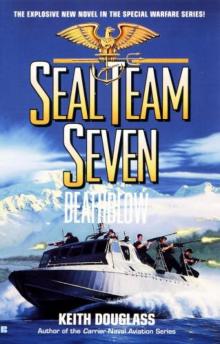 Death Blow sts-14
Death Blow sts-14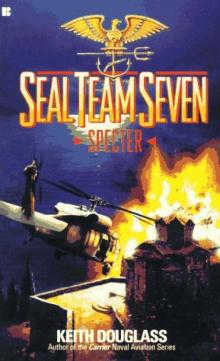 Seal Team Seven 02 - Spector
Seal Team Seven 02 - Spector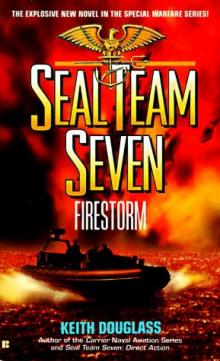 Seal Team Seven 5 - Firestorm
Seal Team Seven 5 - Firestorm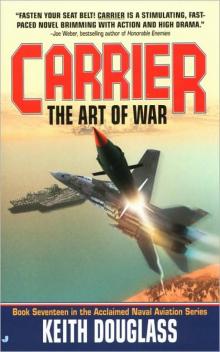 The Art of War c-17
The Art of War c-17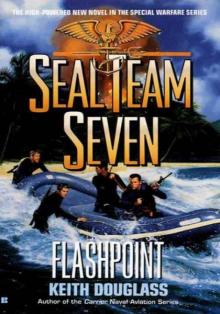 Flashpoint sts-11
Flashpoint sts-11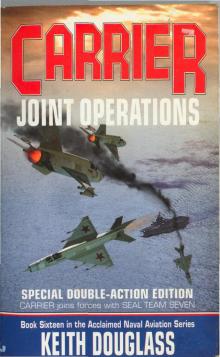 Carrier - Joint Operation Book 16
Carrier - Joint Operation Book 16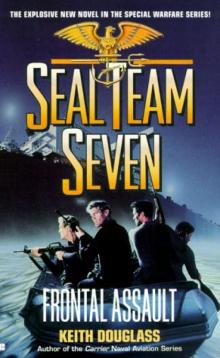 Frontal Assault sts-10
Frontal Assault sts-10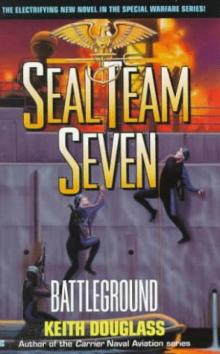 Battleground sts-6
Battleground sts-6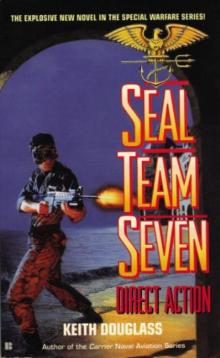 Direct Action sts-4
Direct Action sts-4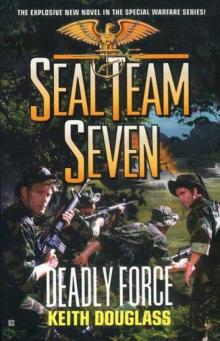 Deadly Force sts-18
Deadly Force sts-18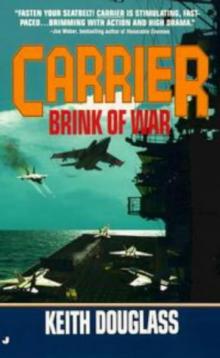 Carrier 13 - Brink of War
Carrier 13 - Brink of War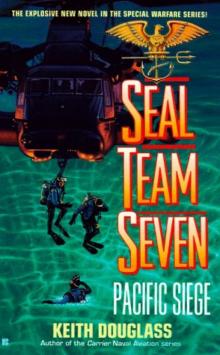 Pacific Siege sts-8
Pacific Siege sts-8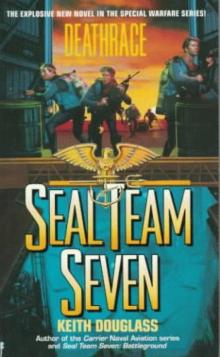 Deathrace sts-7
Deathrace sts-7